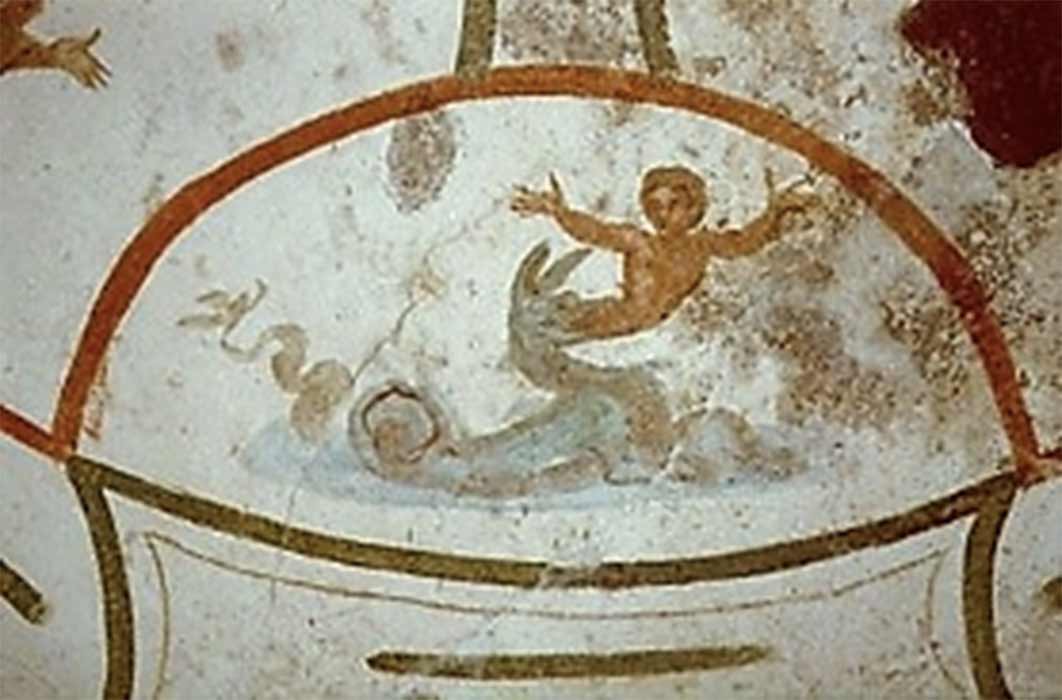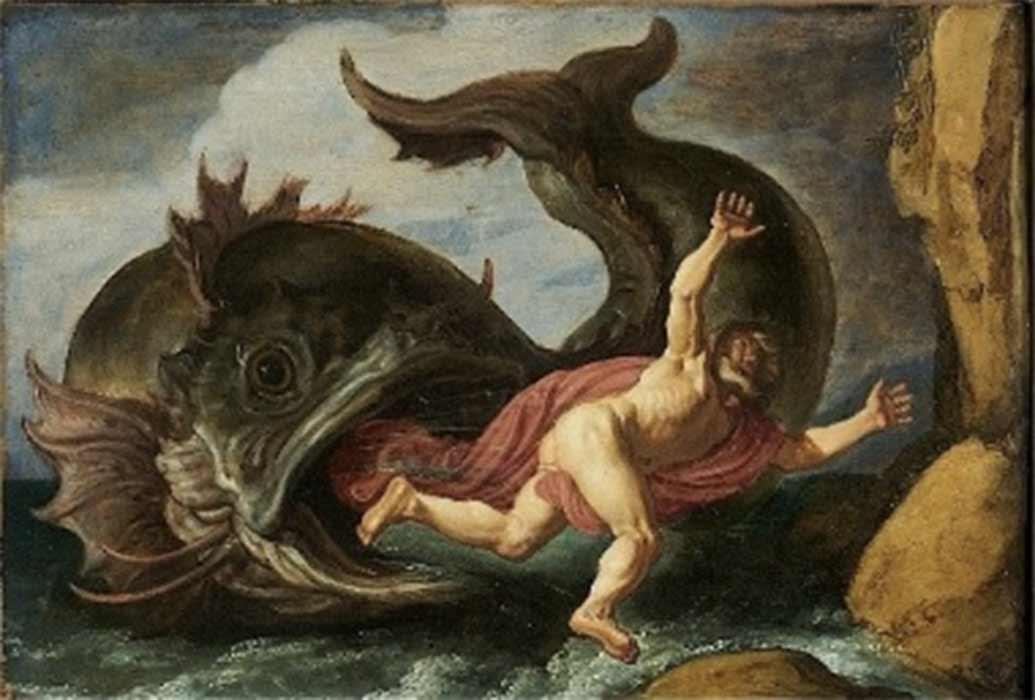
How Jonah Was Swallowed By The Celestial Sea Serpent Cetus
The Old Testament saga of Jonah and his dreadful, three day and night confinement within the “belly of a whale” and disgorgement onto the shore remains one of the Bible’s most enthralling mysteries. The delight this story’s iconic scenes engender in Sunday-school children yields to bewilderment in Christian theologians, serious New Testament scholars who know all too well that Jesus had referred to the ’Jonah’ narrative’s absurd chain of events as factual history in Matthew and Luke’s Gospels (Matt 12:38-42; Luke 11:29-32).
A critical piece of the enigma involves the creature that gulped Jonah. When first recorded around 400 BC, the Hebrew rendition of the story called it a dag gadol, ‘giant fish’. However, the 70 authors of the third-century BC Greek version of the Old Testament (Septuagint) state that Jonah was swallowed by none other than a ketus, or sea monster, a creature typically depicted as a sea serpent or sea dragon in Greek and Roman iconography. Even Jesus claims that Jonah was gobbled by a ketus (Matt 12:40).
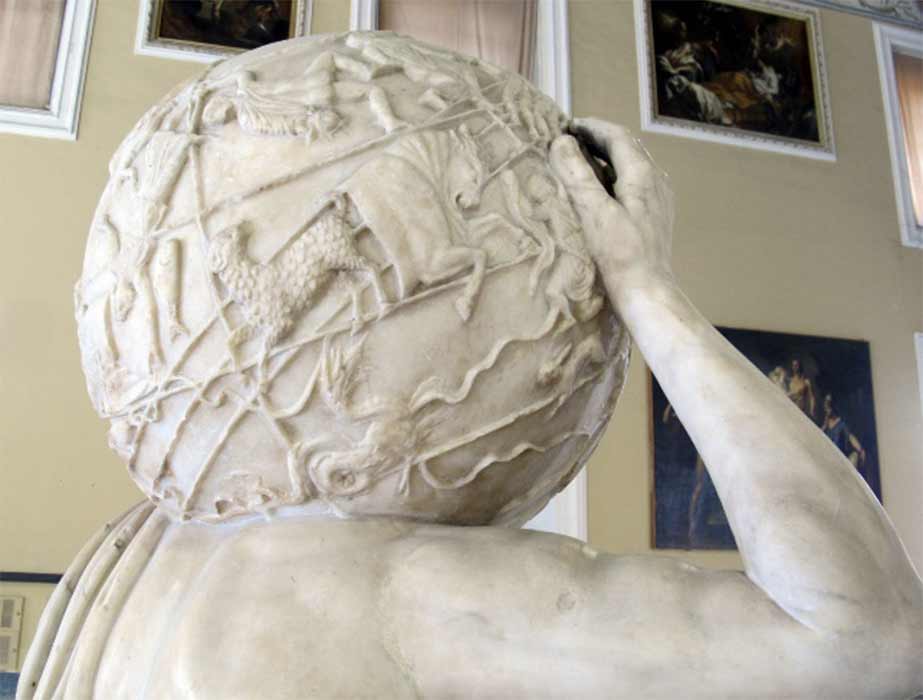
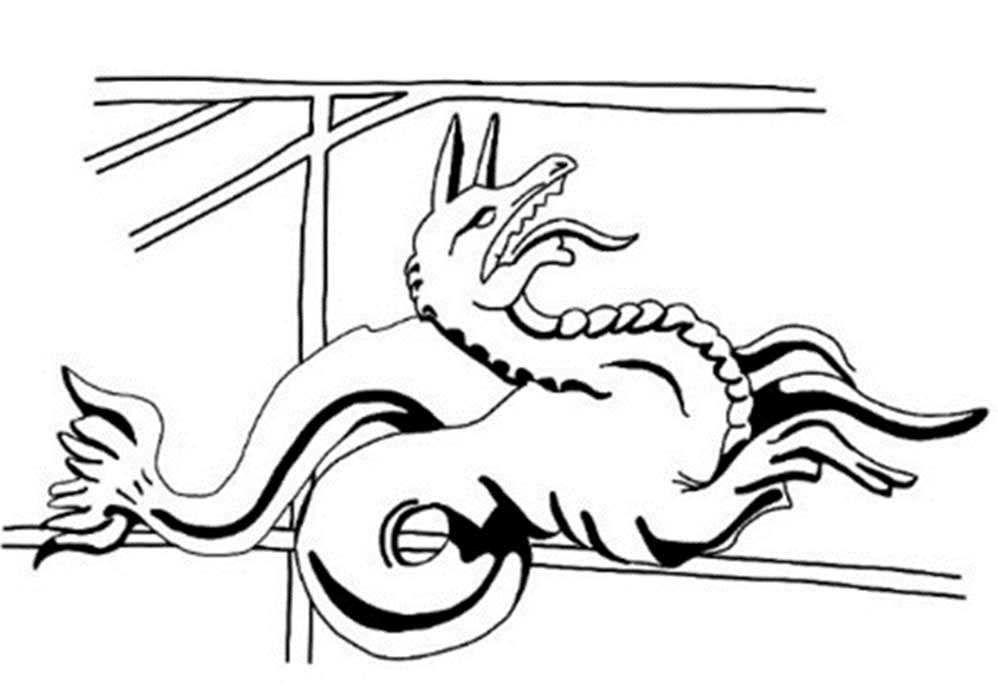
Cetus, the canine-headed Sea Serpent constellation on the second-century Farnese astral globe. (Sailko / CC BY-SA 3.0) and right: Sketch of Cetus on the Farnese star globe. (©Elizabeth Hardy)
Jesus’ assertion is supported by early Christian iconography, which unequivocally depicts Jonah being swallowed by a dog-headed sea dragon—an animal that has never existed in an earthly sea but instead inhabits the astral ocean in the form of Cetus, the Sea Serpent constellation.
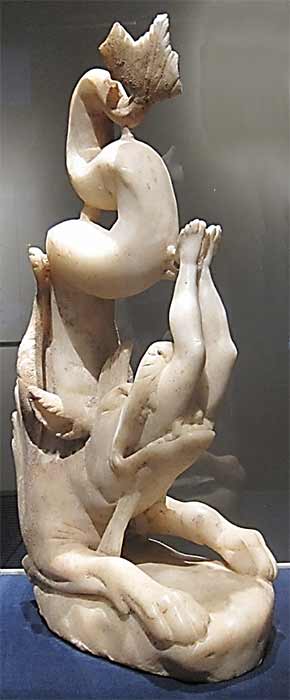
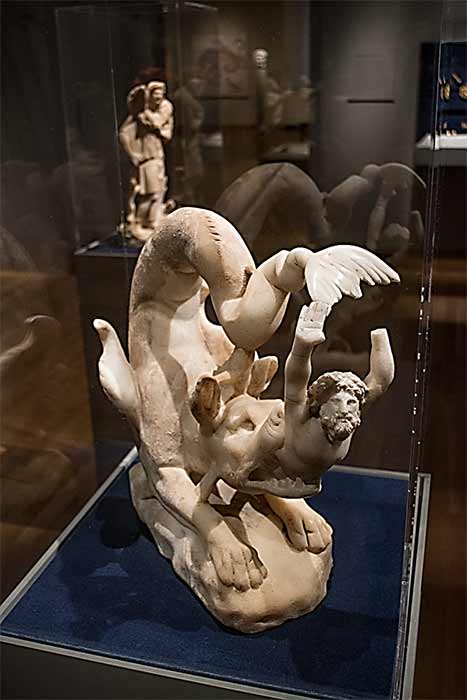
Left: Christian sculpture of Jonah being swallowed by Cetus (480 AD) (CC0). Right: then being disgorged (CC0) Cleveland Museum of Art.
Set In The Backdrop Of The Stars
So how does one make sense of all the incompatible linguistic and iconographic data? How was an ancient Jewish prophet named Jonah simultaneously swallowed by a big fish and a canine-headed sea serpent —the latter a frequent motif in Greco-Roman and early Christian art?
Jesus himself provides the ultimate clue, referring to the Jonah vignette as a sign (Matt 12:39; 16:1-4; Luke 11:29-32). Although the Greek word translated here as ‘sign’ (semeion) certainly means just that, the term also had a more nuanced connotation: ‘a constellation serving as a sign, omen, portent’. And when the story is transposed onto the stars one finds that Jesus’ preposterous claim that Jonah was ingested by a celestial, dog-headed Sea Dragon suddenly becomes the most plausible. In fact, one can find an iconic tableau of the story encoded in the oldest astronomical tablets on record; writings which also expose the celestial identity of Jonah, his boat, his deity, his epithet as a prophet, his harrowing encounter with Cetus, alongside the arcane worldview that allowed this constellation to simultaneously engender a big fish (dag gadol) and a sea serpent (ketus).
